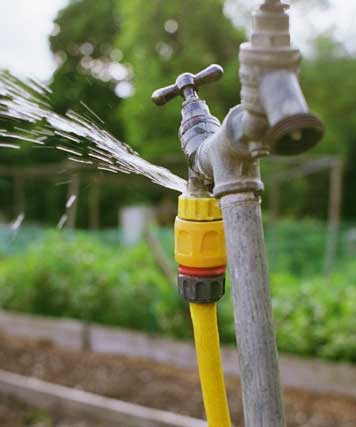Exactly how to Inspect If Your Home Has a Hidden Leakage
Exactly how to Inspect If Your Home Has a Hidden Leakage
Blog Article
Just about every person has their own conception with regards to Locating water leaks.

Early detection of dripping water lines can reduce a potential disaster. Some tiny water leakages might not be visible.
1. Analyze the Water Meter
Every house has a water meter. Checking it is a proven manner in which helps you discover leakages. For starters, switch off all the water resources. Guarantee no one will certainly purge, use the faucet, shower, run the cleaning device or dishwasher. From there, most likely to the meter and also watch if it will transform. Given that no person is using it, there need to be no motions. If it relocates, that shows a fast-moving leakage. If you detect no changes, wait a hr or two and also check back once again. This indicates you might have a slow-moving leak that can even be below ground.
2. Check Water Intake
If you find unexpected modifications, despite your usage being the exact same, it suggests that you have leakages in your plumbing system. An unexpected spike in your expense shows a fast-moving leakage.
At the same time, a steady increase each month, despite the very same practices, reveals you have a slow-moving leak that's also slowly rising. Call a plumber to thoroughly inspect your residential or commercial property, particularly if you feel a cozy area on your floor with piping beneath.
3. Do a Food Coloring Examination
When it comes to water intake, 30% originates from bathrooms. Test to see if they are running effectively. Drop flecks of food color in the tank and also wait 10 mins. There's a leakage in between the container as well as bowl if the shade somehow infiltrates your bowl during that time without flushing.
4. Asses Exterior Lines
Do not fail to remember to inspect your outdoor water lines as well. Needs to water permeate out of the link, you have a loose rubber gasket. One tiny leakage can waste heaps of water and spike your water expense.
5. Examine as well as Evaluate the Circumstance
Homeowners need to make it a routine to check under the sink counters as well as also inside cupboards for any bad odor or mold development. These two red flags suggest a leakage so punctual attention is needed. Doing regular evaluations, also bi-annually, can conserve you from a major trouble.
If you recognize your residence is currently old, keep a careful eye on your heaters, hose pipes, pipelines etc. Look for discolorations as well as compromising as the majority of pipelines and also home appliances have a life expectancy. They will certainly likewise normally degrade as a result of tear and also put on. If you suspect leaking water lines in your plumbing system, do not wait for it to escalate. Call an expert plumber right away so you don't wind up with a terrible mess in your home.
Early discovery of dripping water lines can reduce a possible disaster. Some tiny water leakages might not be visible. Inspecting it is a surefire method that assists you discover leaks. One small leakage can lose bunches of water and also spike your water bill.
If you suspect leaking water lines in your plumbing system, don't wait for it to escalate.
WARNING SIGNS OF WATER LEAKAGE BEHIND THE WALL
PERSISTENT MUSTY ODORS
As water slowly drips from a leaky pipe inside the wall, flooring and sheetrock stay damp and develop an odor similar to wet cardboard. It generates a musty smell that can help you find hidden leaks.
MOLD IN UNUSUAL AREAS
Mold usually grows in wet areas like kitchens, baths and laundry rooms. If you spot the stuff on walls or baseboards in other rooms of the house, it’s a good indicator of undetected water leaks.
STAINS THAT GROW
When mold thrives around a leaky pipe, it sometimes takes hold on the inside surface of the affected wall. A growing stain on otherwise clean sheetrock is often your sign of a hidden plumbing problem.
PEELING OR BUBBLING WALLPAPER / PAINT
This clue is easy to miss in rooms that don’t get much use. When you see wallpaper separating along seams or paint bubbling or flaking off the wall, blame sheetrock that stays wet because of an undetected leak.
BUCKLED CEILINGS AND STAINED FLOORS
If ceilings or floors in bathrooms, kitchens or laundry areas develop structural problems, don’t rule out constant damp inside the walls. Wet sheetrock can affect adjacent framing, flooring and ceilings.
https://www.servicemasterbyzaba.com/blog/how-to-detect-water-leakage-in-walls/

Hopefully you enjoyed reading our excerpt about Detecting hidden plumbing leaks. Thanks a ton for taking the time to browse our piece. Feel free to take the time to distribute this page if you liked it. We value reading our article about Detecting hidden plumbing leaks.
Report this page